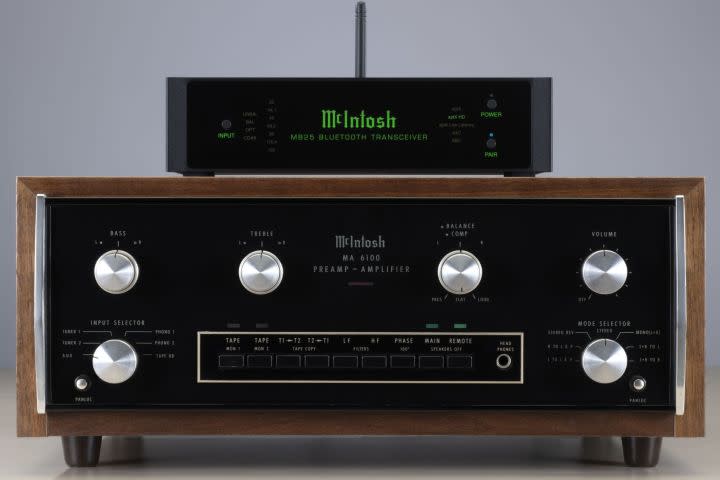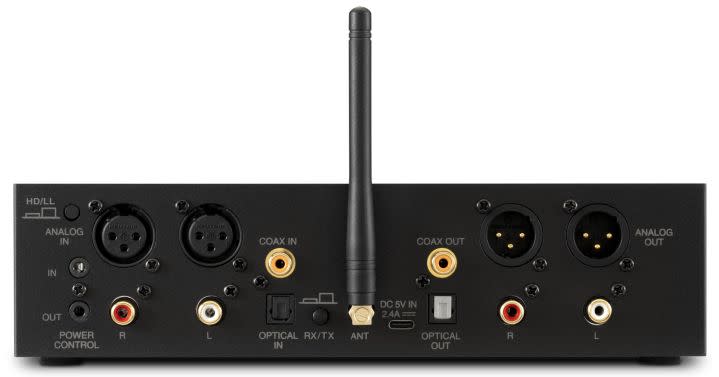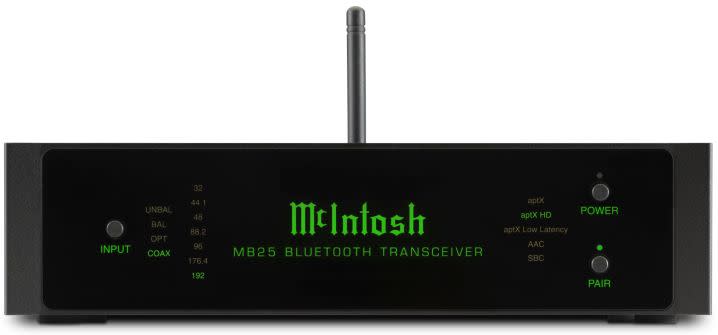McIntosh’s MB25 adds Bluetooth to any hi-fi setup for $600

It should come as no surprise that when McIntosh releases a new product, there are already tons of far less expensive devices that do more or less the same thing. But it’s also the case that when McIntosh releases a new product, it’s designed and engineered to the kind of specifications and tolerances that have earned the American hi-fi brand such a loyal following among die-hard audiophiles. Such is the case with the company’s latest gadget, the MB25, a $600 Bluetooth transceiver (a transmitter and a receiver in one device) that can connect to a vast array of hi-fi components.

What sets the MB25 apart from the mass of $60 to $100 Bluetooth transceivers on Amazon is its comprehensive set of connections. Whether you’re sending audio to the MB25 over Bluetooth, or receiving audio via Bluetooth from the device, you run those connections over analog unbalanced stereo RCA, balanced stereo XLR, or two flavors of digital: optical and coaxial.
This arrangement gives you lot of choice over how incoming Bluetooth signals are sent to the rest of your setup. If you have an existing digital-to-analog converter (DAC) that you love, use one of the MB25’s digital outputs. If you prefer to use the MB25’s built-in DAC, you can switch to one of the analog outputs. All four outputs are active when the MB25 is in receive mode, so theoretically, you could use them all and switch between them using your other gear.

When transmitting, you’ll need to select which connection is to be used, which is done via the front panel’s input button. That glass front panel (the biggest change from the McIntosh MB20 transceiver) is also where you’ll get a visual confirmation of the Bluetooth codec being used (the MB25 supports SBC, AAC, aptX, aptX HD, and aptX LL), as well as the sample rate of your digital music if you’re using optical or coax as your input.
Unfortunately, the MB25 can’t transmit and receive Bluetooth simultaneously — you choose which mode you want using a switch on the rear panel — and you’ll also need to select between standard Bluetooth codecs (SBC, AAC, aptX, aptX HD) and aptX LL (low latency), again with a switch on the back.
An integrated power trigger interface lets the MB25 receive power on/off commands from any compatible McIntosh component.
The MB25 can handle digital inputs up to 24-bit/192kHz and will output hi-res audio at 24-bit/96kHz, however, you may never get to realize the full benefit of these specs. AptX HD — the highest-quality Bluetooth codec supported by the transceiver — always operates at a lossy 24-bit/48kHz. We’re a bit surprised at the absence of Sony’s LDAC codec, which can support up to 24-bit/96kHz when Bluetooth conditions are optimal.
I’m also a bit surprised that, considering the price, that McIntosh doesn’t include a remote for switching inputs, or at the very least, an built-in infrared receiver for use with universal remotes. Perhaps that will be added on the MB30.


